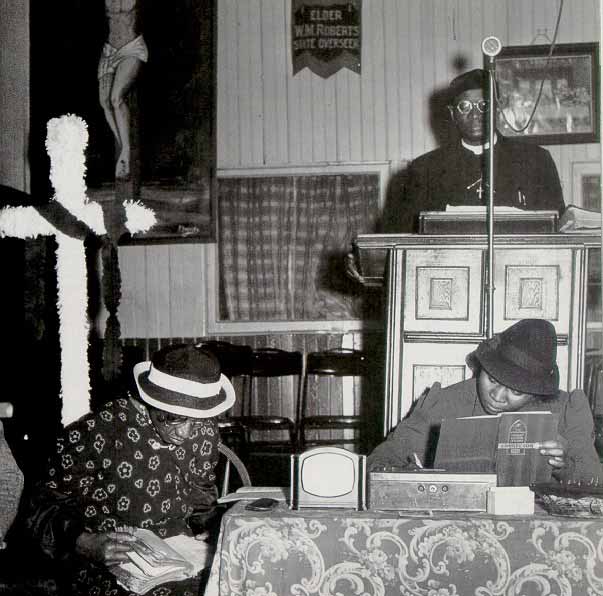|

|
|
Motivations for Migrating North
|
|
|
| The bulk of the migration from the South to the North took place between 1914 and 1920. Especially
large numbers of African Americans left the South in 1915 and 1916, spurred by the reconstitution of the KKK and
the accompanying increase in lynchings and vigilante violence. But African Americans had other motives as well.
Northern industries sought individuals from the South to fill new job openings, and the onset of the war further
increased the movement north. |
|
|
| During the period of migration, black females comprised a smaller proportion of wage laborers
than did black males. Gender factors significantly in the discrepancy in numbers. Although the North owed its powers
of attraction to the industry rapidly growing there, the vision of a better life through better work held more
feasibility, in some ways, for men than women. Northern employers typically favored male wage earners over their
female counterparts, despite the need to pay higher wages that this selectivity caused (Harley 163). As a result,
it was typical for men to move north before women. Having less access to the northern jobs for which African-American
men vied, women often remained in the South a while longer, to save wages for a later migration with other relatives. |
|
|
Black women, however, did harbor strong, albeit often different, reasons for migrating north.
In the South, black women, regardless of skill or educational level, were limited to low-paying, unskilled labor,
usually domestic work. Such work often entailed long, laborious hours rewarded with meager compensation. Some black
women could not even find work. Aside from the prevailing economic conditions that inspired many women to migrate
north, factors such as inadequate education, rape, lynchings and police brutality provided additional encouragement
for a northward move.
Key to the migration was the phenomenon of mobilization; although many left the South individually, large numbers
of people-groups of friends and entire families-often planned the move together, months in advance, sometimes in
clubs. In such situations, women's social networks played an essential role. Through networks developed between
neighbors, in the church and in fraternal organizations, women helped facilitate the group organization necessary
to plan a move. |

The church served as a place for women's organization efforts.
|
|
|
| Although excited by the potential for more opportunities and a better life in the North,
many black female migrants faced a similarly dire situation in northern cities. Job diversity was scarce, and,
as a result, black women sought work similar to that which they had held previously in the South. For many women,
this meant employment as domestic workers, a field readily available for black women to enter, as white northern
women were rapidly leaving their domestic positions for the newly available industrial jobs. |
|
|
|
 
|
![]()